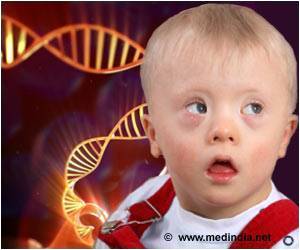'Junk' DNA, or repetitive DNA segments previously thought to have no function, have now been found to create exons, which could play an important role in gene regulation, according to a new study.
A new study is suggesting that 'junk' DNA, or repetitive DNA segments previously thought to have no function, have now been found to create exons, which could play an important role in gene regulation.
It's long been known that certain "junk" DNA could evolve into exons, which are the building blocks for protein-coding genes in higher organisms like animals and plants.But, the new study at University of Iowa has now found evidence that the exons created from junk DNA is linked with gene regulation-the finding that may increase understanding of how humans differ from other animals, including non-human primates,
Almost 50 percent of human DNA consists of repetitive DNA, including transposons, which can "transpose" or move around to different positions within the genome. A type of transposon called retrotransposons are transcribed into RNA and then reintegrated into the genomic DNA.
And the most common form of retrotransposons in the human genome are Alu elements, which have more than one million copies and occupy approximately 10 percent of the human genome.
"Alu elements are a major source of new exons. Because Alu is a primate-specific retrotransposon, creation of new exons from Alu may contribute to unique traits of primates, so we want to better understand this process," said the study's senior author Yi Xing, Ph.D., assistant professor of internal medicine and biomedical engineering.
The researchers used a high-density exon microarray, with an aim to study the impact of Alu-derived exons on human gene expression.
"Hundreds of exons in the human genome were created from Alu elements. The whole-genome exon microarray allowed us to quickly identify exons that most likely contribute to the regulation of gene expression and function," said Lan Lin, Ph.D., University of Iowa postdoctoral fellow in internal medicine and the lead author of this study.
They then suggested that the presence of a muscle-specific Alu-derived exon resulted from a human-specific change that occurred after humans and chimpanzees diverged evolutionarily.
"In this case, this exon is only expressed at a high level in the human muscle but not in any other human or non-human primate tissue, so this implies that the exon plays a functional role in muscle, and this role is human-specific," said Xing.
The study has appeared in the latest issue of the open-access journal PLoS Genetics.
Source-ANI
RAS/SK
 MEDINDIA
MEDINDIA




 Email
Email







